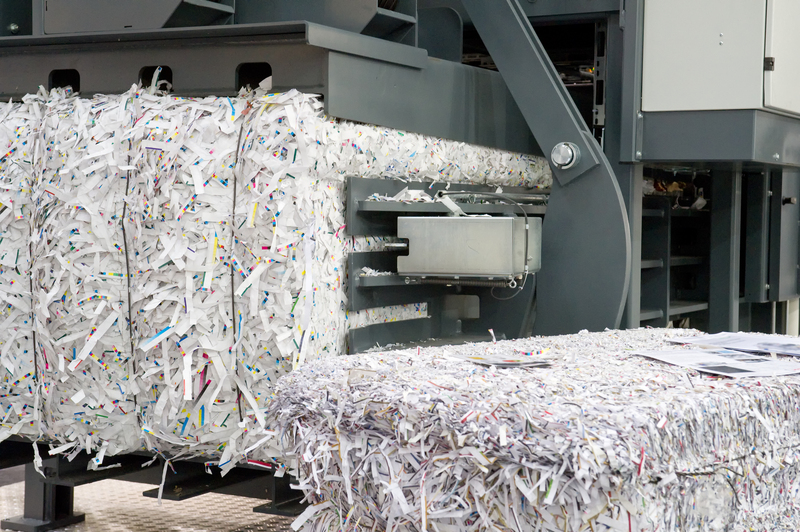Redefining Sustainability: The Role of Wood Waste
In the modern era, sustainability is no longer an option but a necessity. As the world grapples with climate change and environmental depletion, innovative solutions are required. One often overlooked resource is wood waste. Embracing its potential can significantly redefine sustainability and revolutionize the way industries operate.
The Growing Problem of Wood Waste
Every year, millions of tons of wood waste are generated globally. This includes byproducts from logging activities, sawmill residues, and post-consumer wood waste such as used pallets and construction debris. If improperly managed, these materials can lead to environmental degradation by occupying extensive landfill space or contributing to greenhouse gas emissions through decomposition.
Categories of Wood Waste
- Industrial Wood Waste: This comes from lumber mills and includes sawdust, off-cuts, and bark.
- Construction and Demolition Wood Waste: Comprises scrap wood, broken pallets, and wood from old structures.
- Post-Consumer Waste: Involves household and commercial wood products such as furniture and packaging materials.
Transforming these different categories of waste into valuable resources is imperative for a sustainable future.

The Role of Wood Waste in Sustainability
Wood waste offers a myriad of opportunities for enhancing sustainability. It provides a renewable source of energy, supports sustainable manufacturing, and enables innovative product development.
Wood Waste as a Renewable Energy Source
One of the most impactful uses of wood waste is in the production of bioenergy. By converting wood residues into biofuels, industries can reduce reliance on fossil fuels, thereby decreasing their carbon footprint. Here's how it works:
- Biogas Production: Wood waste can be fermented to produce methane-rich biogas, a clean-burning fuel for electricity generation.
- Pelletization: Wood pellets, created from compressed sawdust and shavings, serve as efficient fuel for heating and power plants.
- Pyrolysis: This process transforms wood waste into bio-oil, a substitute for crude oil, and biochar, improving soil fertility and sequestering carbon.
Sustainable Manufacturing from Wood Waste
Beyond energy production, wood waste can enhance sustainable manufacturing. By integrating waste wood into new products, industries can reduce resource extraction and lower energy costs.
- Engineered Wood Products: These include particleboard, fiberboard, and oriented strand board, all manufactured from wood waste.
- Recycled Wood Products: Used pallets and other wood products can be refurbished, extending their life and reducing the demand for virgin materials.
Innovative Product Development
Wood waste is a treasure trove for innovation. Creative minds are developing novel products that replace traditional materials with sustainable alternatives.
- Biocomposites: Combining wood fibers with polymers creates sustainable composites for construction and automotive industries.
- Wood-Plastic Composites (WPC): Used in roofing, decking, and cladding, these products merge recycled wood with plastic, offering durability and sustainability.
The Environmental Impact of Utilizing Wood Waste
Repurposing wood waste provides significant environmental benefits:
- Reduced Deforestation: By optimizing wood waste, demand for fresh timber diminishes, preserving natural habitats.
- Decrease in Landfill Use: Diverting wood waste from landfills reduces methane emissions and conserves land resources.
- Lower Carbon Footprint: Products manufactured from recycled wood waste generally require less energy, resulting in reduced carbon emissions.
Economic Benefits of Wood Waste Utilization
Harnessing wood waste not only aids the environment but also fuels economic growth. As a renewable resource, wood waste provides a constant material supply, enabling industries to develop sustainably.
- Job Creation: The development and management of wood waste recycling and processing facilities create new employment opportunities.
- Cost Savings: Using recycled materials reduces production costs and enhances competitiveness by minimizing input expenses.
- Market Expansion: Innovative uses of wood waste can open new markets and business opportunities, driving economic advancement.

The Future of Wood Waste in Redefining Sustainability
The role of wood waste in redefining sustainability will continue to evolve with technological advancements and changes in societal attitudes. Key trends shaping the future include:
Technological Innovations
Emerging technologies will further enhance the efficiency of wood waste utilization. Examples include more advanced bioconversion processes, improved material engineering, and automated sorting and recycling systems.
Policy and Regulation
Legislation encouraging the use of recycled materials and providing incentives for waste recycling will be pivotal in maximizing the potential of wood waste.
Community and Industry Engagement
Collaboration between communities, industries, and governments will be essential to optimize the supply chains and ensure broad-based participation. Educating the public about the benefits of wood waste utilization and sustainable practices can foster a culture of conservation.
Conclusion
As we face the challenges of a changing world, reimagining our approach to waste management is vital. Wood waste stands as a cornerstone in the efforts to build a sustainable future. By channeling its potential, industries and communities can contribute meaningfully to a healthier planet. Together, we must embrace strategies that prioritize innovation, sustainability, and economic growth, charting a course toward a brighter, greener future.